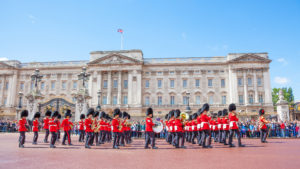
5-Day Awesome Kenya – High End
Days 5 days, 1 country Lodging 3 nights in Hotels, 1 nights in Special Stay Meals 4 Breakfasts, 4 Dinners Transport Pop-up roof 4×4 vehicle
22 days, 1 country
19 nights in Hotels, 2 nights in Special Stay
21 Breakfasts, 6 Dinners
Coach, 1 internal flight
Average 38 people
Expert Trip Manager + Driver Team + Local Guides
We’ve been visiting Italy for decades, but it’s fair to say we’ve never put together an adventure quite like this. From Rome this one glides through Renaissance Florence and the glitzy Riviera, with cooking classes and historical monuments galore along the way. Then onto Naples and Pompeii, for a feast of pizza and Roman history, before hitting up the incomparable Amalfi coast. After cruising around some dazzling isles and visiting some lemon groves, we’ll head back to Rome. But we’re not done yet – not even close. Sicily beckons, with its valleys of ancient archaeological wonders, volcanoes to explore, coastal towns to fall in love with and all of the heavenly carbs we can fit in. After a full week on this paradise island, we’ll be head-over-heels for absolutely everything Italian. It’s called Ultimate Italy for a reason.

Days 5 days, 1 country Lodging 3 nights in Hotels, 1 nights in Special Stay Meals 4 Breakfasts, 4 Dinners Transport Pop-up roof 4×4 vehicle

Days 4 days, 1 country Lodging nights in Hotels, 1 nights in Special Stay Meals 4 Breakfasts, 3 Dinners Transport Pop-up roof 4×4 vehicle Group

Days 10 days, 1 country Lodging 7 nights in Hotels, 2 nights in Special Stay Meals 10 Breakfasts, 9 Dinners Transport Pop-up roof 4×4 Mini
The Rwenzori Mountain Range is a stunning mountain range in Western Uganda that is home to the third-highest peak in Africa, Mount Stanley.
The best time to hike the Rwenzori Mountains is during the dry seasons, from December to February and June to August. During these months, the trails are more accessible, and the views are better
Hiking the Rwenzori Mountains is a strenuous activity that requires a high level of physical fitness. It is recommended that you begin training several months before the trek and consult with a doctor to ensure you are fit for the hike.
You will need to bring appropriate hiking gear, including sturdy hiking boots, warm clothing, rain gear, and a backpack. It is also recommended that you bring your own sleeping bag.
Yes, it is required to have a guide when hiking the Rwenzori Mountains. Guides are trained to navigate the terrain and ensure your safety during the hike.
The cost of hiking the Rwenzori Mountains varies depending on the route and itinerary. However, most treks range from $1,500 to $2,500 per person.
Yes, altitude sickness can be a concern when hiking the Rwenzori Mountains. It is important to take your time and acclimate to the altitude during the trek.
Accommodation during the trek is typically in mountain huts or tents. The huts and tents are basic and do not have electricity or running water.
Yes, hiking the Rwenzori Mountains is generally safe. However, it is important to follow the guidance of your guide and take necessary safety precautions during the trek.
These popular itineraries can be customized to match your budget and how many people you’re planning to travel with, click on the tabs below to see more African safari destinations




Because you’re not just anyone, you can explore your uniqueness by tailoring your dream trip with an expert travel consultant in four simple steps.

Let our experts know, through email, call or chat, your grand bucket-list attractions, African dreams, expected experiences, and the unique type of traveler you are.

Tailor your holiday safari trip, adding and making little changes to suit your style of travel with your personal safari expert guiding you through the process.

Travel with peace of mind knowing that your personal safari manager is taking care of everything local and will be there when you come.

Even when your trip comes to an end, keep the dreams alive by sharing your experience with our fans and your social groups.
The Rwenzori Mountain Range is a stunning mountain range in Western Uganda that is home to the third-highest peak in Africa, Mount Stanley.
The best time to hike the Rwenzori Mountains is during the dry seasons, from December to February and June to August. During these months, the trails are more accessible, and the views are better
Hiking the Rwenzori Mountains is a strenuous activity that requires a high level of physical fitness. It is recommended that you begin training several months before the trek and consult with a doctor to ensure you are fit for the hike.
You will need to bring appropriate hiking gear, including sturdy hiking boots, warm clothing, rain gear, and a backpack. It is also recommended that you bring your own sleeping bag.
Yes, it is required to have a guide when hiking the Rwenzori Mountains. Guides are trained to navigate the terrain and ensure your safety during the hike.
The cost of hiking the Rwenzori Mountains varies depending on the route and itinerary. However, most treks range from $1,500 to $2,500 per person.
Yes, altitude sickness can be a concern when hiking the Rwenzori Mountains. It is important to take your time and acclimate to the altitude during the trek.
Accommodation during the trek is typically in mountain huts or tents. The huts and tents are basic and do not have electricity or running water.
Yes, hiking the Rwenzori Mountains is generally safe. However, it is important to follow the guidance of your guide and take necessary safety precautions during the trek.






Esco African Safaris is a reputable tour operator and DMC for Uganda, Kenya, Tanzania and Rwanda.
We specialize in offering sustainable Africa gorilla tours and wildlife safaris to our guests.
We operate enriching off-the-beaten-track adventures, wildlife viewing safaris, and gorilla trekking vacations that are tailored to our guests’ interests, travel dates, and budgets.
Our guests trust us to deliver memorable, exciting, and sustainable experiences.
Copyright © 2025 Esco African Safaris. All rights reserved.
WhatsApp us